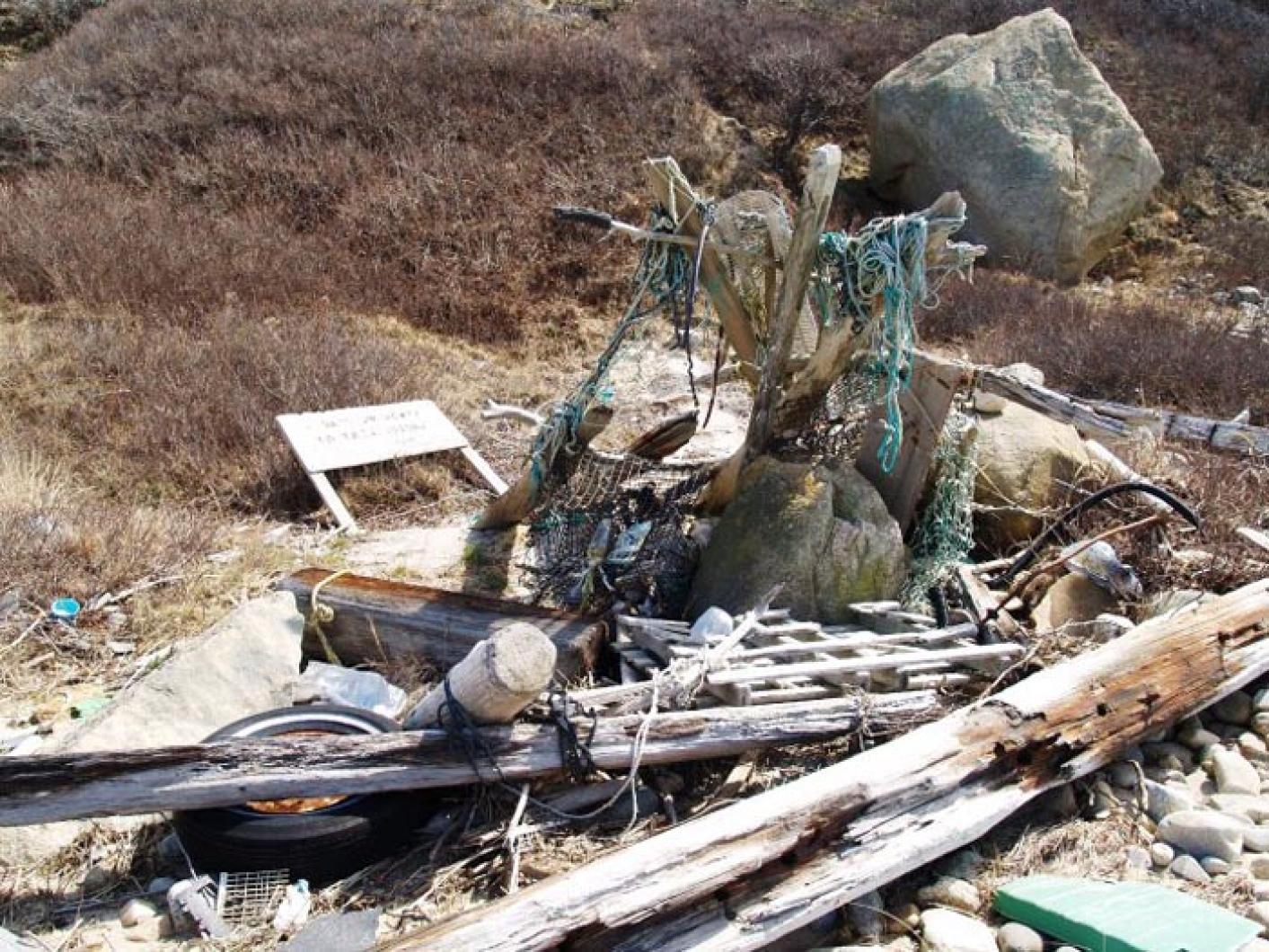As a photographer I am always keeping my eyes open for new things to shoot. Often subjects have a way of finding me.
I didn’t set out to photograph trash on the beach, but last spring while walking on Lambert’s Cove Beach I started to notice a variety of colorful items interspersed among the sand and rocks. As I looked closer, I recognized them to be random items from everyday life — water bottles, toys, ribbon, soda caps, plastic wrappers, utensils, straws . . . all of them were made out of plastic. I’ve always been environmentally conscious, but seeing what had washed up shocked me. I went home, looked around and felt overwhelmed by the amount of plastic that surroundedme. It waseverywhere.
A few days later I came across a television segment that discussed “the world’s biggest landfill,” which it turns out lies in the middle of the Pacific Ocean somewhere between Hawaii and California. Scientists call it the Great Pacific Garbage Patch. Estimated to be the size of Texas, the Great Pacific Garbage Patch has been estimated to contain 3.5 million tons of trash, much of which isplastic. Currents form a circular vortex, called a gyre, which collects ocean debris and swirls it aroun d into a large garbagesoup.
I began doing further research to educate myself about plastic pollution and how it is affecting marine life. Much of this debris is ingested by marine animals often leading to their death. Midway Island, which is 1,200 miles northwest of Hawaii, has seen a drastic increase in deaths of the albatross population which is feeding off the plastic debris that washes ontoshore. A group of artists led by phot ographer Christopher Jordan have spent the past two years on Midway Island documenting the situation. The most striking photos are those that show the stomach cavities of recently deceased albatross. They are filled with plastic — bottle caps, straws, toothbrushes. It was incredibly unsettling.
I flooded my Facebook page with posts about the Great Garbage Patch, the albatross and tips on avoiding plastics. I went back to the beach with camera in hand. With new eyes, I saw balloons, Gatorade bottles, toothbrushes, plastic bags and yogurt containers. I sat for a minute and thought about the albatross on Midway Island and the image I saw of a baby albatross choking to death on a toothbrush, and was overcome with emotion. Careless consumption by humans was the sole cause. This issue of stopping plastic pollution seemed impossible. I’ll admit that for a day or two after that I just gave up. I used a plastic water bottle and threw it away with reckless abandon. Okay, and a few yogurt containers too. What’s the point, I thought. What difference can I really make? But then some friends started posting on Facebook about ways that they were trying to reduce disposable waste in their homes. Encouraged, I decided that small acts could actually have an impact.
Another smaller garbage patch has recently been found in the Atlantic Ocean. An increase in trash on our beautiful beaches could eventually have an impact on summertourism. And aesthetics and economics aside, consuming fish that have ingested plastic particles and their chemical byproducts is cause for concern; BPA has been linked to a variety of cancers, among other hea lth problems. The idea of our trash killing marine animals is, at least for me, difficult to reconcile.
A new action has been added to the reduce, reuse, recycle slogan: refuse. Recycling is a good practice and one that most of us are familiar with, but not everything we consume is recyclable and plastic is notbiodegradable. Refusing is a betterpractice. How does that translate to our dailylives? Some simple solutions: Bring your own reusable bag to the groc ery store and buy a stainless steel bottle to fill with water instead of purchasing disposable plastic waterbottles. I have one for water and one forcoffee. Keep metal or bamboo utensils in your car or at your desk so that you will be able to refuse plasticutensils. Limit your consumption of p repackaged foods. Buy local products. There are many online resources that can help you begin to live a plastic-free life.
This Saturday, the Vineyard Conservation Society is hosting its 19th annual Earth Day beach cleanup. I encourage readers not only to participate in the cleanup but also to be conscious about what items you discover as you are picking up trash. What items do you useregularly? How can you replace them?
I’m not perfect; I still eat yogurt out of plastic containers more often than I should, though it’s my goal to start making my own yogurt at home. I sometimes ask the grocery store clerk for a paper bag when I forget my cloth ones. I should buy milk in a glass bottle instead of a cardboard container. Plastics are so pervasive in our consumer culture that to live a totally plastic-free life is virtually impossible. But I do my best, and that makes me feel as if I am making an impact, however small it may be.
Alison L. Mead lives in Oak Bluffs.






Comments
Comment policy »